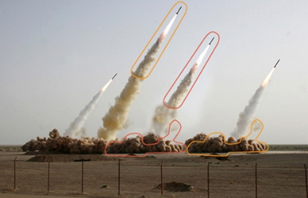“Perhaps we should all stop for a moment and focus not only on making our AI better and more successful but also on the benefit of humanity.”
Stephen Hawking, November 2017
Photo manipulation presents significant ethical issues, particularly when the altered image has different content from the original. These kinds of adjustments may result in inaccurate or misleading depictions of persons, places, or objects, which would be seriously harmful to the truth. This is especially concerning in a time when the public’s perception and opinion are greatly influenced by visual media. Such manipulations damage the public’s confidence in the media and have the ability to propagate misinformation, which could have negative effects on society. Further highlighting the necessity for ethical standards and verification techniques is the ease with which convincing photo manipulation is now possible because of the development of AI technologies. Furthermore, the stealing of content and its misuse raises concerns in addition to photo alteration, undermining media integrity and highlighting the necessity of upholding high ethical standards.
We are moving in the right direction by resolving these ethical issues with Verify. Verify gives the chance to efficiently identify misuse and manipulation, and preserve the integrity of visual material by tracking content and guaranteeing uniqueness.
The Coalition for Content Provenance and Authenticity (C2PA), formed by Adobe, Arm, Intel, Microsoft, and Truepic, develops technical standards to certify the source and history of media content, addressing online misinformation. It merges efforts from Adobe’s Content Authenticity Initiative and Microsoft’s Project Origin to combat digital disinformation. While we at Verify fully endorse C2PA, we see our approach as a valuable complement to its efforts. C2PA establishes a standard for a block of metadata specifically intended for tracking the source or origin of a file (provenance). However, metadata is often stripped during the uploading process to platforms like social media. Therefore, C2PA proves particularly useful in niche situations, such as for a journalist to verify that a file indeed originates from the White House and hasn’t been tampered with by a hacker during transmission. Yet, it is important to highlight that C2PA’s scope is different from ours. While C2PA sets a robust framework for verifying file origins, Verify’s AI-fingerprint technology offers a complementary layer by embedding the fingerprint within the pixels of an image. This ensures the integrity and traceability of the image wherever it goes, even if someone takes a screenshot of it. This way, we enhance the overall security and authenticity framework established by C2PA, making the digital ecosystem even more reliable and secure. Here, we explore two ethical issues that, when addressed with Verify, represent a significant stride towards resolution.
Journalistic Integrity
Photo manipulation in journalism has the potential to undermine news reports’ credibility by casting doubt on their objectivity and misleading the public. An instance of this kind of moral conundrum is when a news outlet manipulates a photo to produce a more dramatic or sensationalized image than what is actually true. For instance, exaggerating the seriousness of the situation by adding smoke or fire to a picture of a conflict zone when, in fact, none happened. Other news organizations then mindlessly embrace these twisted photos,
creating a chain reaction that manipulates an increasing number of people. This was the case with the news report that examined a picture published by Iran’s Revolutionary Guards media outlet, Sepah News. The image showed a four-rocket version, where two major sections appeared to closely replicate other sections and turned out to be duplicated. Notably, several renowned news outlets, including The Los Angeles Times, The Financial Times, The Chicago Tribune, BBC News, MSNBC and NYTimes.com, adopted this doctored photo, illustrating the scope of the spread of misinformation.
Another concern arises when a news organization uses photos from a different era or location to illustrate a current happening is another instance of unethically dubious photo alteration. For instance, portraying a picture from a prior war as current misrepresents the current state of affairs and can manipulate public perception of ongoing conflicts. These actions have the potential to mislead readers and undermine the authority of the news source.


Consumer deception
The dishonest exploitation of photographs by businesses to attract clients with services or products that they eventually cannot deliver is another unsettling aspect of photo misuse. This frequently occurs when a business improperly exploits photos of the goods or services of other businesses and then offers something different from what is depicted in the photo. The growing internationalization of e-commerce has made it more challenging for users to evaluate the credibility of websites, particularly those that are based outside of the Netherlands and cannot be validated through, say, the Dutch Chamber of Commerce membership.
An online retailer might, for instance, show pictures of goods that do not correspond to the real things it sells. Despite being seduced by the eye-catching images, customers end up with poor quality, altered, or nonexistent goods. Customers may become dissatisfied, frustrated, and lose confidence as a result of this.
This kind of behavior is not only deceptive, but it also erodes consumer trust and compromises the integrity of ethical corporate processes. It emphasizes how moral standards must be followed when utilizing photos in order to guarantee that viewers are given truthful and impartial information.
